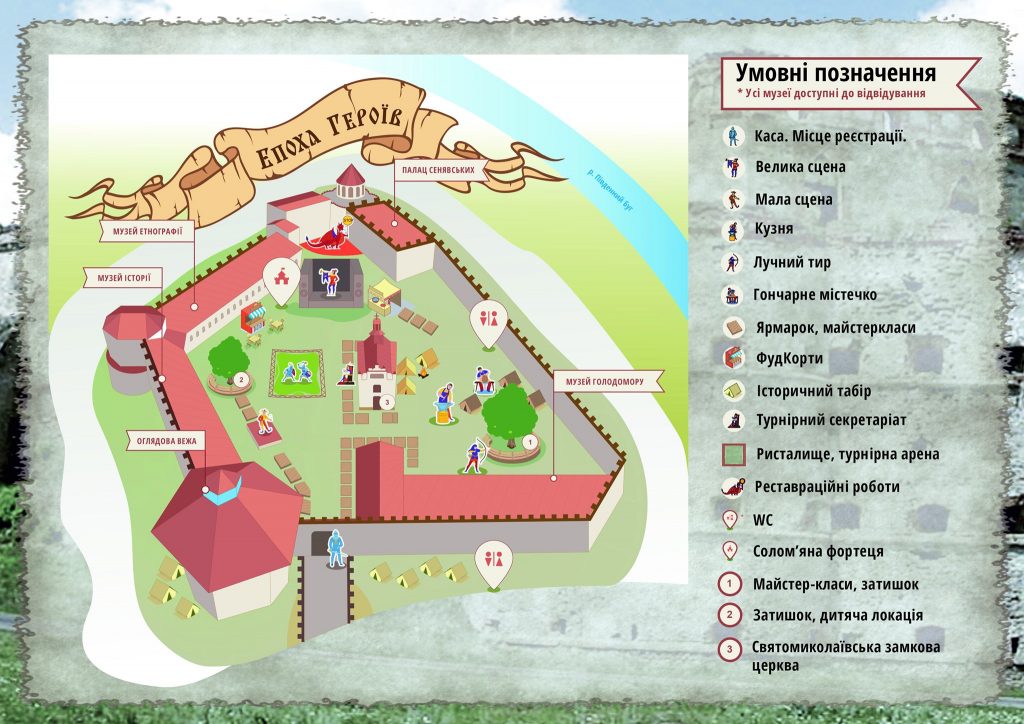In western Ukraine, on the banks of the Southern Bug River, stands the Fortress Medzhybizh. The impressive bulwark displays a variety of different architectural styles and periods of defensive architecture. Thus, the fortress combines features of a medieval castle with the powerful modern fortress styles of the Renaissance.
Monument and History
History On the banks of the Southern Bug
Quelle: Medzhybish- fortress courtyard Quelle: Mezhybizh Castle ca.1900 Quelle: © Jadwiga Veresk Quelle: ©Sergii Gulenok
Architecture The history of the building goes back to XIV-XVI, XIX centuries, it occupied a prominent place among the medieval fortresses .
Quelle: ©Щур Сергій Меджибіж_укріплення.JPG Quelle: © Petro Vlasenko Medzhybizh Quelle: Foto Nata Mostova - Medzhybizh Quelle: Fortess Medshybish
Nature Experience Upper Pobuzhia National Nature Park is located im Khmelnytskyi Oblast, in the western part of the country. The new park covering an area of 1,080 km².
Quelle: Quelle: © Vladislav Quelle: © Igor Ignatiev Quelle: ©Haidamac Medzyboz_Zamek




